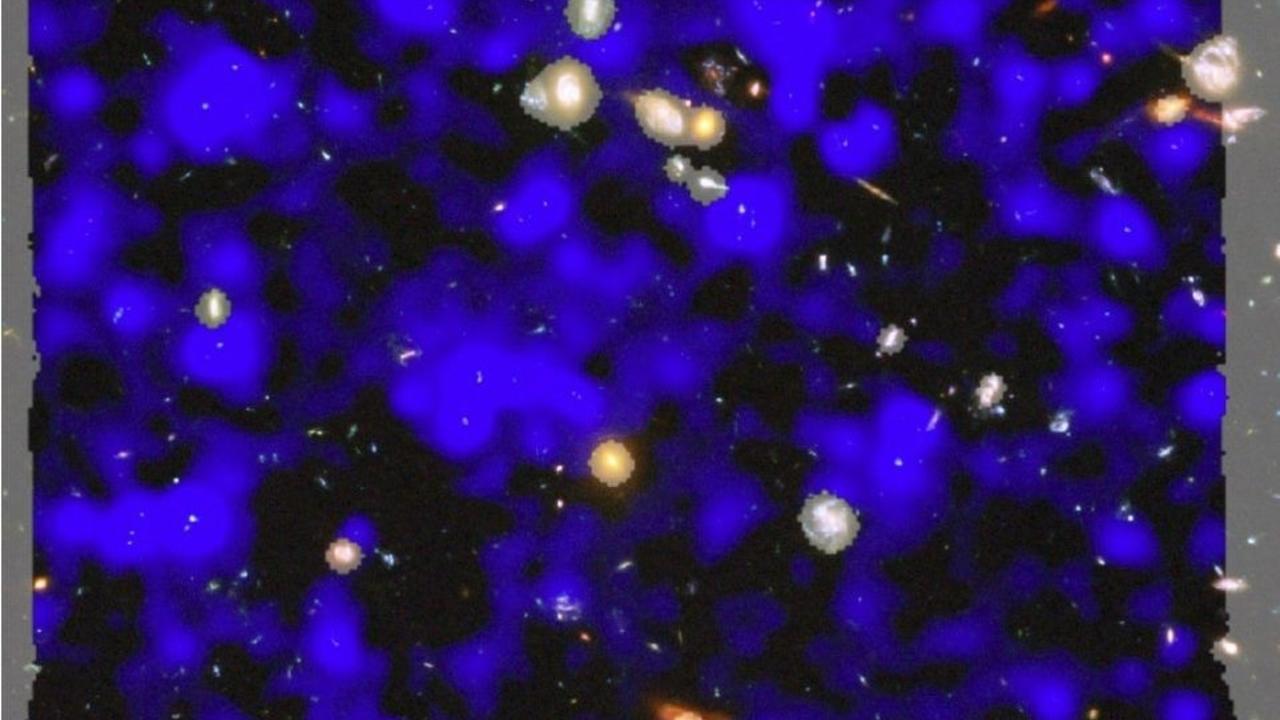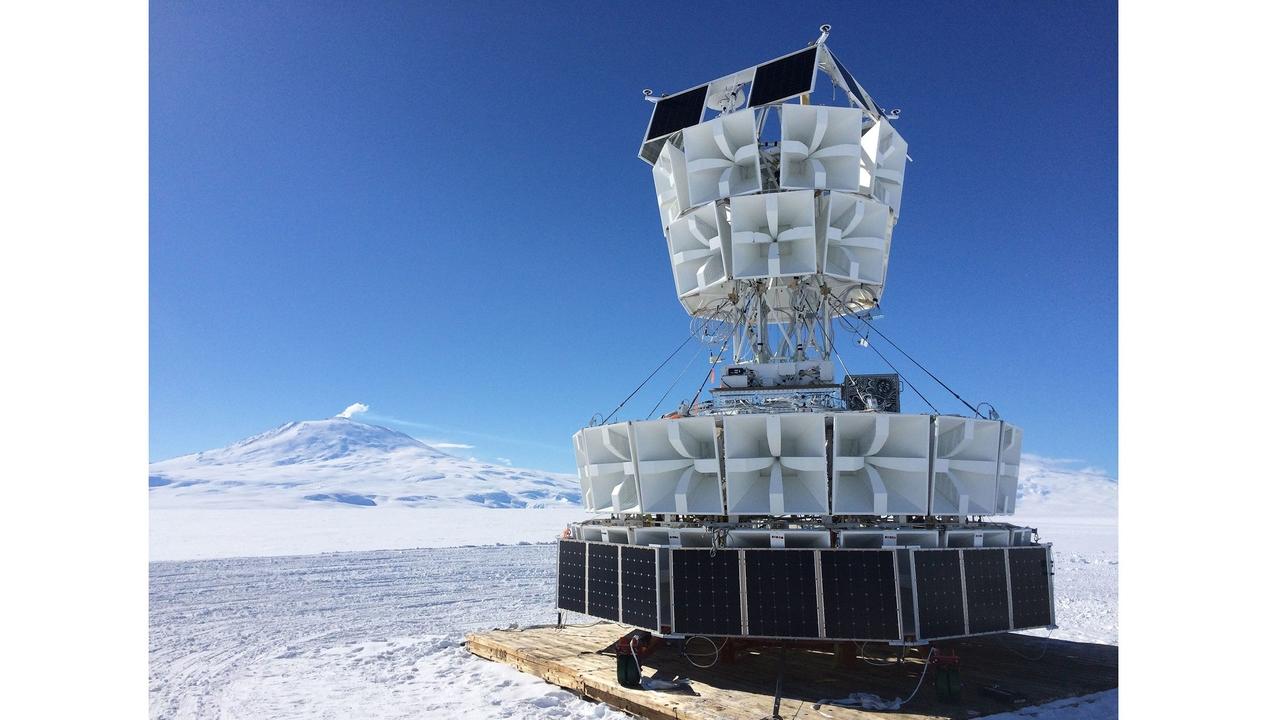Science News
& Faculty Articles
Impossible Universe

Article by Dr. Amira Val Baker, Astrophysicist, Resonance Science Foundation Research Scientist
The universe as we currently understand it may not be allowed to exist – at least according to the cosmological model of string theorists.
To understand the behavior and evolution of the universe, cosmological models provide a mathematical description capable of making validated predictions. Current models are based on Einstein’s general relativity and assume a ‘flat’ universe – that is a universe that appears flat on large scales. Within this framework the geometry of the universe can then be described as a closed ‘de Sitter’ universe or open ‘anti-de Sitter’ universe.
Observations show that the universe is expanding at an ever so-slightly increasing rate and that as it expands the vacuum energy remains constant. The best cosmological model to describe such a universe is an inflation model which occurs in a quasi-de Sitter universe...
From Somewhere … To Everywhere!

By Dr. Inés Urdaneta / Physicist at Resonance Science Foundation
Atomic Hydrogen (H) – the first element in our periodic table – has made an unexpected and unprecedented apparition. A recent study by Lutz Wisotzki of the Leibniz Institute of Astrophysics in Potsdam with collaborators from different institutions reveals the presence of H all over the sky, including the apparently empty space between galaxies. This was concluded after detecting one of the traits that characterize the H element, part of the digital print of the atom, called the “spectrum.” We’re referring to the Lyman-alpha transition of atomic hydrogen at a wavelength of 121.6 nanometers.

(Ly-α in Figure 1), corresponding to a frequency of 2.47×1015 hertz.
The Lyman-alpha line is in the ultraviolet section of the electromagnetic spectrum. Because it is absorbed by air, its astronomical presence must be detected by satellite-borne instruments, unless the source is...
The Origin of the Sun’s Dynamo and the Extended 22-Year Solar Cycle

Article by by
A study published late September depicts the mean rotation rate of the Sun as a function of velocity vs. radius at different latitudes. The subsurface boundary shear and the angular velocity gradient gives rise to a latitudinal migration of a toroidal field dynamic with a cycle of 22 Years, and the magnetic field as a primary driver of torsional oscillations on the surface.
”All manifestations of solar activity, from spectral irradiance variations to solar storms and geomagnetic disturbances, are caused by the magnetic fields generated by a dynamo mechanism operating in the convection zone deep below the visible surface of the Sun. Despite substantial modeling and simulation efforts, our understanding of how the magnetic field is generated, transported to the surface and forms the solar activity cycles is very poor." – Alexander G. Kosovichev and Valery V. Pipin
Torsional...
Particles Are Flying Out of Earth's Poles!

Article review by Dr. Amira Val Baker, Astrophysicist, Resonance Science Foundation Research Scientist
Photo: ANITA's 48 antennas are aimed down at the Antarctic ice on a 25-foot-tall gondola. Credit: Christian Miki/University of Hawaii at Manoa
The detection of cosmic rays is rare – however the latest detection is even rarer as it appears to be going in the wrong direction.
Cosmic rays are bombarding the Earth every day and are measured at observing sites across the world, with the most notable being located at the Earths south pole.
Not to be fooled by their historical name, cosmic rays generally refer to high energy particles with mass whereas high energy in the form of gamma rays and/or X-rays are photons. These cosmic particles were discovered in 1912 by Victor Hess when he ascended to 5300 meters above sea level in a hot air balloon and detected significantly increased levels of ionization in the atmosphere.
In many cases the cosmic rays are not directly observed and it...
Where There is Black, There is White?

Image Via NASA/FQtQ Jolene Creighton
By Dr. Inés Urdaneta / Physicist at Resonance Science Foundation
This could be the first time you have heard about a white hole (WH). Meanwhile, we have been hearing for quite some time about “black holes” (BH) as regions in outer space where nothing — not even light — could escape. Such cosmological entities, roughly represented by a singularity or point of infinite energy/mass/information density and an event horizon defining the “size” of the BH, are increasingly subjects of study. In addition, the possibility of detecting gravitational signatures as the ones detected two years ago, coming allegedly from the collision and merging of two black holes, have increased their interest even more. So, what about WH?
The obscure regions of space called BH have, at least theoretically, a counterpart mathematical description, which would imply an opposite behavior; a region of space where nothing — not...
Neutron star jets challenge theory!

Article by Dr. Amira Val Baker, Astrophysicist, Resonance Science Foundation Research Scientist
Relativistic jets synonymous with black holes have been observed in a highly magnetized neutron star for the first time – putting current theories into question!
We see jets of ionized matter in all types of astrophysical objects from the plasma jets seen emanating from the surface of stars like our Sun (read more here) to the relativistic jets emanating from black holes. The energy of these jets and relativistic nature depends on the nature of the object and the location of the jet formation – with the most prominent generally emanating from the polar regions as extended beams along the axis of rotation.
However, although these jets are observed in some neutron stars, they have never been observed in highly magnetized neutron stars. This phenomenon has previously led theorists to conclude that magnetic fields inhibit their formation. Subsequent theories suggested that...
Planet Type's Missing Link

Article by Dr. Amira Val Baker, Astrophysicist, Resonance Science Foundation Research Scientist
Why are some planets rocky and some gaseous? We may just be nearer to finding an answer through a new planet discovered by master’s student Merrin Peterson.
Have you ever wondered why the Earth is rocky and solid and planets like Jupiter and Neptune are gaseous? To add to the intrigue there are brown dwarfs which are neither planet or star, read more on brown dwarfs here.
So, what is it that classifies something as a planet and differentiates between rocky planets and gaseous planets?
Planets and stars are theorized to have formed in the collapsing dust of a nebulae, with the star forming in the centre of rotation and the planets forming in the corresponding disk. Obviously at the centre of rotation the angular momentum will be the greatest and the star will be experiencing significant energy production and emitting vast quantities of visible light. This is not the case for...
Time-reversed signatures in black hole high energy gamma-ray bursts

Gamma-ray bursts are some of the highest-energy explosions ever detected, shining brighter than a million trillion times the output of Earth's sun, according to NASA.
A new study, published Aug. 13 in The Astrophysical Journal, has found that high-energy black hole gamma-ray bursts are time-reversed, meaning the brilliant light wave is spit out one way and then sent out again in the opposite order.
It is titled “Smoke and Mirrors,” but a new discovery from College of Charleston astrophysicist Jon Hakkila may be anything but smoke and mirrors.
Hakkila and student researchers have discovered a peculiarity in the light curves of gamma-ray bursts (GRBs) that may provide a breakthrough in understanding the conditions that produce these events. GRBs are the intrinsically brightest explosions known in the universe. They last from seconds to minutes, and originate during the formation of a black hole accompanying a beamed supernova or...
Puzzling Gamma-Rays from the Sun

by Dr. Amira Val Baker, Resonance Science Foundation Astrophysicist
Gamma-rays have been observed emanating from the solar poles at a higher rate than expected.
Gamma-rays are the highest observed energy of electromagnetic radiation and are typically produced in energy transitions in atomic nuclei. Similar to photons of light being emitted as electrons reconfigure in atoms, photons of light are released in the reconfiguration of nuclei in an atomic nucleus, albeit at a much higher energy range!
Our star – the Sun – is a hot rotating ball of plasma continuously emitting radiation at a broad range of energies, from radio to gamma-rays.
Energy generation is greatest in the centre of the Sun, decreasing radially outward.
High energy radiation, such as gamma-rays, are thus thought to be due to the bombardment of the solar atmosphere by high velocity protons – hadronic cosmic rays. However, as the gamma-rays from such an interaction are assumed to be absorbed long before...
Physicists Think They’ve Spotted the Ghosts of Black Holes from Another Universe

Article by Rafi Letzer
We are not living in the first universe. There were other universes, in other eons, before ours, a group of physicists has said. Like ours, these universes were full of black holes. And we can detect traces of those long-dead black holes in the cosmic microwave background (CMB) — the radioactive remnant of our universe's violent birth.
At least, that's the somewhat eccentric view of the group of theorists, including the prominent Oxford University mathematical physicist Roger Penrose (also an important Stephen Hawking collaborator). Penrose and his acolytes argue for a modified version of the Big Bang.
In Penrose and similarly-inclined physicists' history of space and time (which they call conformal cyclic cosmology, or CCC), universes bubble up, expand and die in sequence, with black holes from each leaving traces in the universes that follow. And in a new paper released Aug. 6 in the preprint journal arXiv—apparent...



